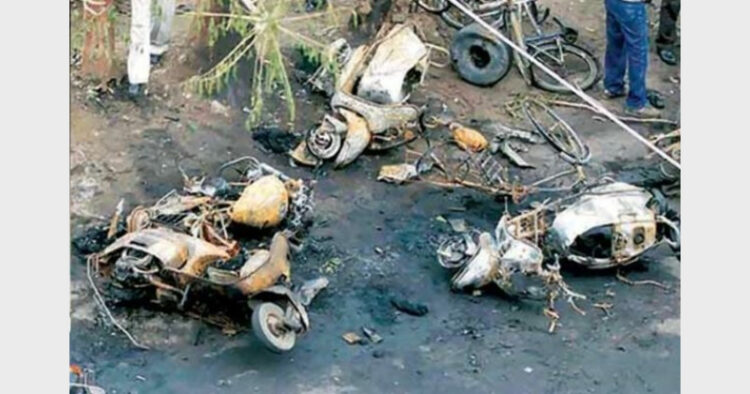The Ahmedabad blasts case was solved after one of the cars used in the blast had a Baroda 'fake registration'. Investigations conducted in Baroda led to few arrests, which led to the unravelling of the case.
New Delhi: The Ahmedabad blasts of 2008, the subsequent probe by central agencies and the Gujarat cops were of much significance in the security realm. Now that the death sentence has been served to 38 convicts, those who worked in the case closely would have some satisfaction.
The ammonium nitrate explosive used for the serial explosions of July 26, 2008, in Ahmedabad was sourced from Karnataka. Sources said jihadists were motivated by the likes of ex-SIMI leaders Safdar Nagori and Sarai Meer Abu Bashir.
The case in Gujarat was solved after the Gujarat Police and Intelligence Bureau picked up Abu Bashir on August 16, 2008, from a little known hamlet Sarai Mir in Azamgarh district of Uttar Pradesh. Three days later, on July 29, 2008, 23 bombs were defused in diamond processing and residential areas of Surat.
Notably, for the first time, the Indian Mujahideen terrorists targeted the trauma centre of hospitals, where the bomb injured were being brought. One car with an IED was parked in an Ahmedabad hospital. Again, the maximum number of casualties and injuries that occurred at the hospital were those innocents and social workers who had come to donate blood and help blast victims.
The Indian Mujahideen group had already activated and had struck since 2005 in many places. The phrases like 'Azamgarh module' was also discussed in the political and security circles. Among the blasts carried out by IM was September 13, 2008, explosions in Delhi. Five synchronised bomb blasts took place within a few minutes on Saturday, September 13, 2008, at various locations in Delhi.
Gujarat state cops plunged into action after 2008 explosions. The then DGP Gujarat was P C Pande, Joint Commissioner (Crime) who carried out the investigation, was Ashish Bhatia. The present Delhi Police Commissioner, Rakesh Asthana, was then Police commissioner in Baroda. The state police had the backing of then Gujarat Chief Minister Narendra Modi and Amit Shah, who was also in charge of the Home portfolio in the western state then.
The Ahmedabad blasts case (of July 26, 2008) was solved after one of the cars used in the blast had a Baroda 'fake registration'. One newspaper, published in Baroda was used to wrap the Surat IEDs. Investigations conducted in Baroda led to few arrests, which led to the unravelling of the case.
The Ahmedabad blasts investigations led to pinpointing of real terrorists and helped solve puzzles around Azamgarh, Delhi, Mumbai and Bhatkal modules of the group.
Riyaz and Iqbal Bhatkal group made the Surat IEDs (which were defused), while the explosives in Ahmedabad were reportedly made by the Azamgarh module of Indian Mujahideen.
The Gujarat police initially arrested the suspected mastermind, Mufti Abu Bashir, along with nine others, in connection to the bombings in Ahmedabad.
In fact, on July 26, 2008, media organisations reportedly received a 14-page e-mail saying, "Await 5 minutes for the revenge of Gujarat", a clear reference to the 2002 riots that took place after the Godhra train burning incident that claimed over 50 Hindus.
The contents of the e-mail warned of attacks within five minutes: "In the name of Allah, the Indian Mujahideen strike again! Do whatever you can, within 5 minutes from now, feel the terror of Death!"
Within 70 minutes, fifty-six people were killed, and over 200 people were injured. However, a militant group Harkat-ul-Jihad-al-Islami also claimed responsibility for the attacks.














Comments